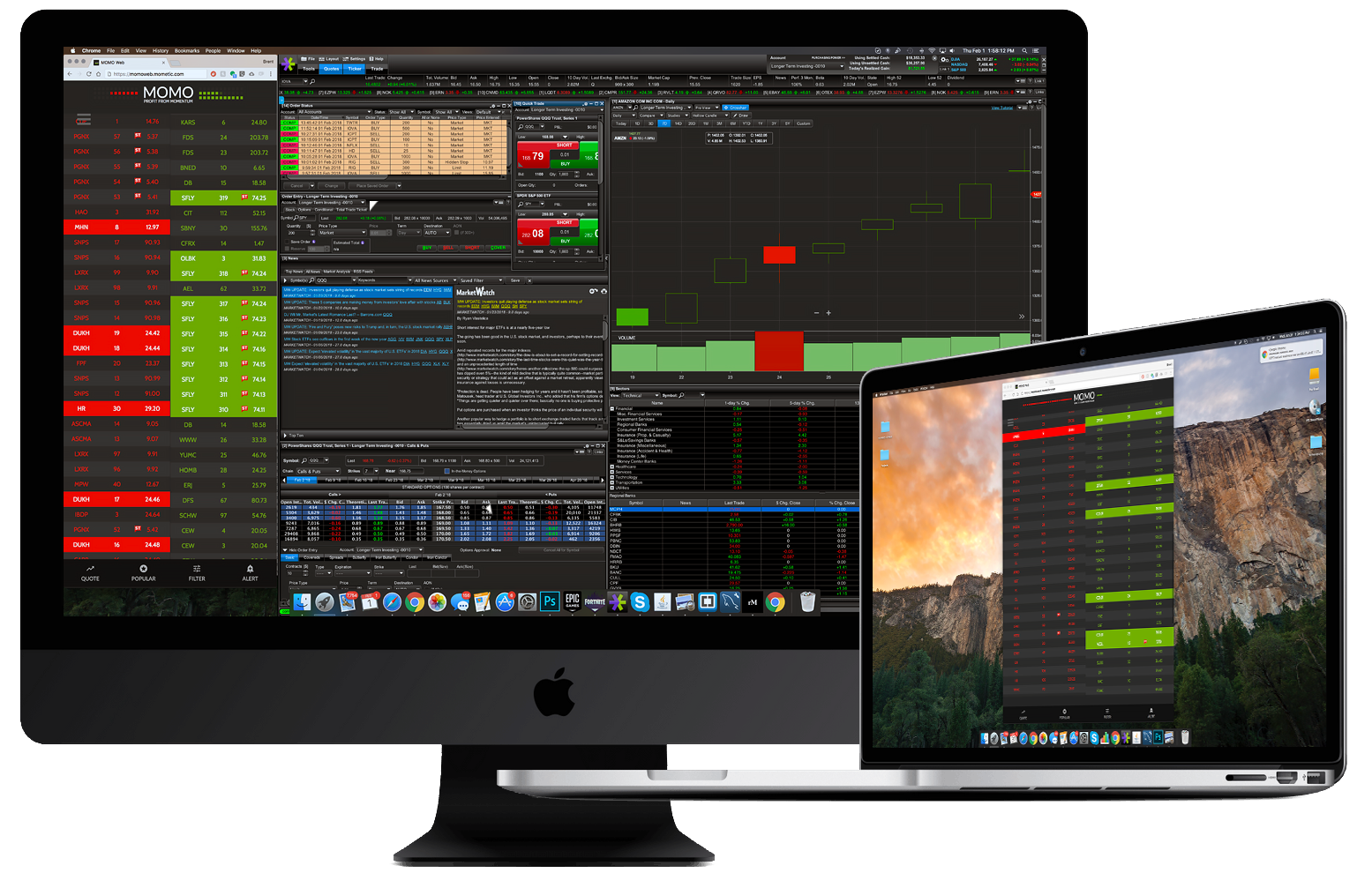MOMOweb vs MOMO apps
In March, we released our browser-based version of MOMO that was mainly intended for desktop users. We felt that that building it in the browser only made sense given it was 2018 and would set us further apart from other stock screeners that still required dedicated downloads and updates.
MOMOweb wasn't expected to work as well as it does on mobile devices and tablets, so it makes deciding between the MOMO apps and MOMOweb a bit of a challenge.
The MOMO apps available on Google Play and the Apple App store provide native interoperability with your iOS and Android devices and offer a few features which are tailored to mobile users which MOMOweb does not. However, MOMOweb provides flexibility to use MOMO on either your desktop and mobile device. MOMOweb currently also offers additional features that are not availalble on the MOMO apps.
As you are trying to decide between the two, below are what I consider the main considerations. Outside of these, both MOMO and MOMOweb use the same data stream, offer 52wk high/lows, StockTwits trending, and extended market availablity.
MOMOweb:

-
If interested in using MOMO on both desktop or mobile.
-
MOMOweb has a additional features to support desktop use (Notably: Popular stocks, Sticky Quotes, Alert History, and Volume Filtering)
-
If getting the latest features as quickly as soon as possible is important. MOMOweb will likely be the first platform for introducing new features as it is easiest to design and test.
MOMO Apps:

-
Provides a natural app experience which is hard to exactly reproduce with browser-based technology.
-
The mobile push alerts are better suited for iOS/Safari users as Apple doesn't support the same push standards for alerts as found on Chrome.
-
The apps include data connection availability, in-app notifications, and sleep over-ride functions if intending to keep MOMO displayed for extended periods.
***Note: All platforms use the same backend data feed and data stream formatting.

